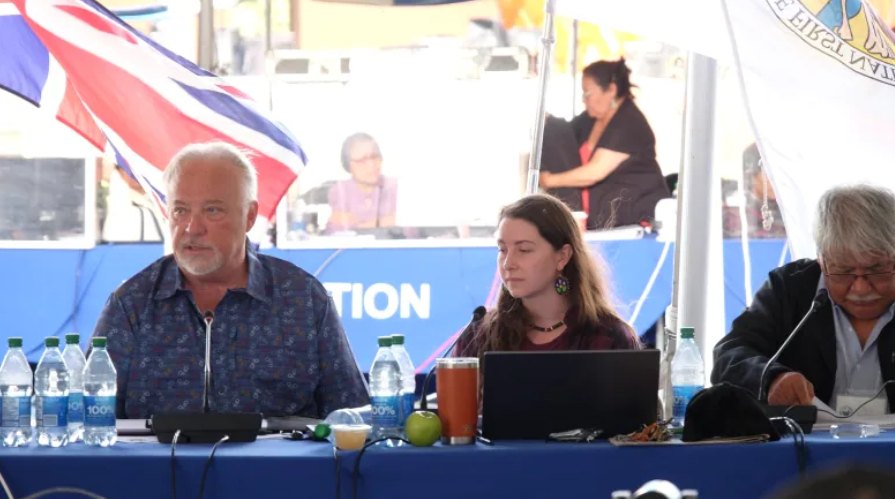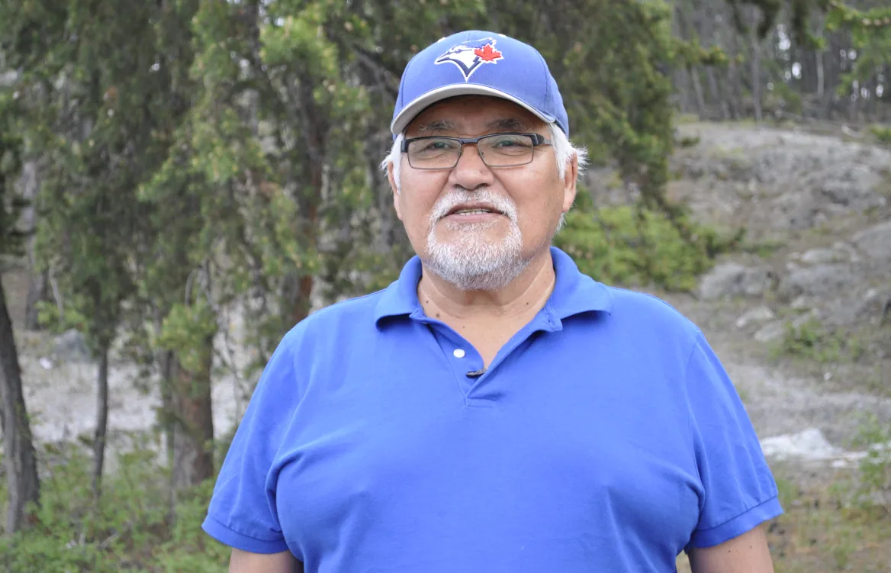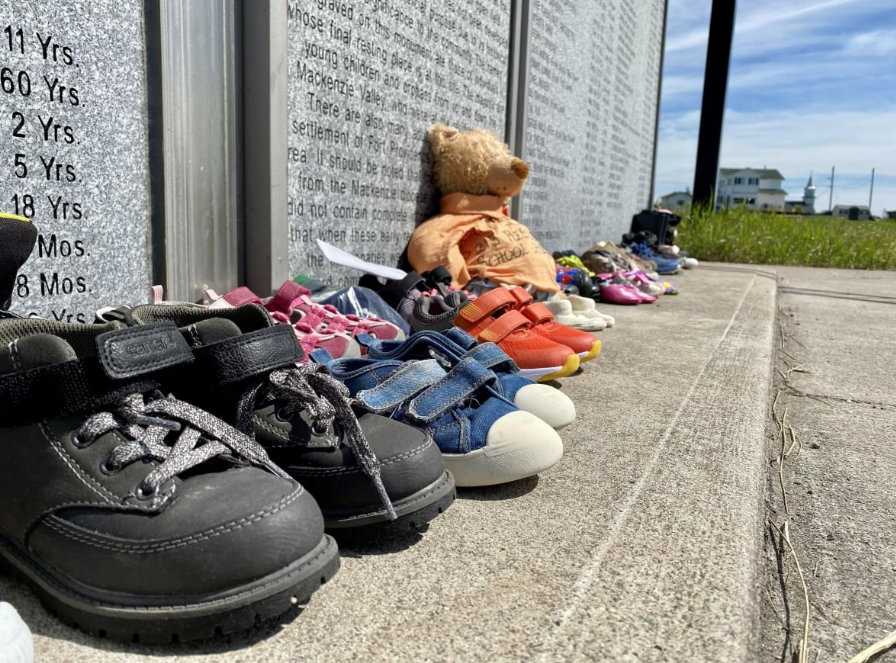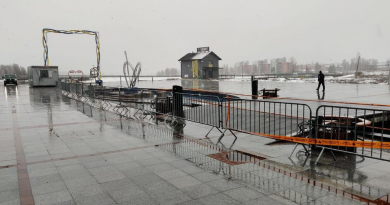Dene Nation seeks approval to search 15 residential school sites for unmarked graves

Warning: This story discusses children missing at residential schools.
Dene Nation is proposing to search 15 residential school sites in the North for unmarked burial sites, a plan which brought up complicated and difficult emotions about what this undertaking will mean for survivors and the family of missing children.
Elder and former Tulita chief Paul Andrew told the Dene Nation assembly, gathered just outside of Yellowknife this week, that he hopes the project brings closure to his family.
Andrew was at residential school for seven years, and his grandmother passed away without knowing what happened to her two daughters.
“I have often wondered what happened to them. Is it possible I have cousins somewhere in the world? Or is that it?”
“It’s very possible that it will settle my soul if we are able to answer some of those questions,” he said.
Many Elders and delegates were concerned about resurfacing painful memories and asked for the discussion to be put off.
Dettah Elder Alfred Baillargeon said in Wıı̀lıı̀deh Yatıı̀ that the Dene National Assembly is there to “make resolutions for the betterment of our people.”
“I don’t agree with talking about the burial sites while we are here.”

Emotional supports necessary
The project team includes Gwichya Gwich’in professor Crystal Fraser, a renowned expert in residential school history at the University of Calgary, PhD student and Pehdzeh Ki First Nation member Rebecca Gray, and Dr. Brian Moorman, a “world expert” in ground penetrating radar, who has experience studying burial sites in Fort Providence and at Taltheilei Narrows.
Gray has worked on similar projects in the south.
“I feel very strongly that this work needs to have emotional support, spiritual support for anyone who is being involved in it,” she said.
Research co-ordinator Tom Andrews told the delegation the project plan is to spend a year researching archives for potential unmarked grave sites, interviewing Elders and gathering names of students who were recorded as having died in residential schools.
The ground-penetrating radar part of the project would take place in the second year, once the frost is off the ground, he said.
Dehcho Grand Chief Herb Norwegian said many of the children who died at residential schools like Sacred Heart in Fort Providence, would have been grandparents today with large families.
“Once you’ve confirmed … that you have these graves, unmarked graves or human remains, the big question is what would you do about that?”
Establishing a protocol for when graves are identified is “probably something that Elders would want to take control of,” he said.
Archival, Elders knowledge needed
Ground penetrating radar technology can view areas down to eight metres, but is most effective in the first two metres of soil, said Gray.
“It takes knowledge of the land and the histories within the community and the archives to understand the whole picture of what’s going on there,” said Gray.
Once begun, it will take months to interpret the results, said Andrews.
“If we build another body of knowledge … that says that this area for sure had graves in it and then we find anomalies there through ground penetrating radar, we can be reasonably sure that those anomalies are in fact graves,” he said.
This was the case in a 2003 search for graves in Fort Providence, which relied on archives, photographs and Elders interviews to identify the sites, he said.
In the 1940s, nuns dug up graves of priests and nuns to move them to a new cemetery, but never moved the remaining graves. The nuns turned the field to grow potatoes where the community now says their children are buried, said Andrews.
The community now has a commemorative plaque with the names of children who died, a plaque which Fort Good Hope Chief Tommy Kakfwi has visited three years in a row.
Three of his relatives never made it home, and are commemorated in Fort Providence.

Digging up the past
Kakfwi agreed with pausing the conversation and focusing on issues like youth and homelessness.
“We have important issues that are plaguing our community,” he said. “Talking about the dead, is not going to bring anything productive to our youth today. We have concerns.
“I have to think about tomorrow, not dig up things from the past because it brings up a lot of hurt.”
Łı́ı́dlı̨ı̨ Kų́ę́ First Nation Chief Kele Antoine told delegates that the community has already allocated funds to search sites including Lapointe Hall, which was demolished six years ago.
A preliminary scan of the area identified “mass anomalies.”
Dehcho Grand Chief Herb Norwegian said that students at Lapointe Hall lived in a section that is “literally right over these graves.”
Antoine asked whether Dene Nation could team up with his First Nation if delegates approve the project.
The assembly is expected to vote Thursday on whether the project should go ahead.
Last fall, Dene Nation proposed Canada spend half a million dollars on the project.
The plan is to search 15 residential school grounds identified by the Truth and Reconciliation Committee: Immaculate Conception (Roman Catholic) and All Saints (Anglican) in Aklavik, Fleming Hall in Fort McPherson, Sacred Heart in Fort Providence, St. Joseph’s in Fort Resolution, Bompas Hall (Anglican) in Fort Simpson and Deh Cho Lapointe Hall, St. Peter’s in Hay River, Grollier Hall (Roman Catholic) and Stringer Hall (Anglican) in Inuvik, Akaitcho Hall in Yellowknife, Federal Hostel in Délı̨nę, and All Saints in Shingle Point, Yukon.
Related stories from around the North:
Canada: N.W.T. residential school survivors, descendants head to Edmonton for papal visit, CBC News
Finland: Psychosocial support for Sami proposed ahead of Finland’s Truth and Reconciliation Commission, Yle News
Greenland: Greenland, Denmark initiate investigation into past relations, Eye on the Arctic
Norway: Can cross-border cooperation help decolonize Sami-language education, Eye on the Arctic
Sweden: Sami in Sweden start work on structure of Truth and Reconciliation Commission, Eye on the Arctic
United States: Alaska reckons with missing data on murdered Indigenous women, Alaska Public Media.



